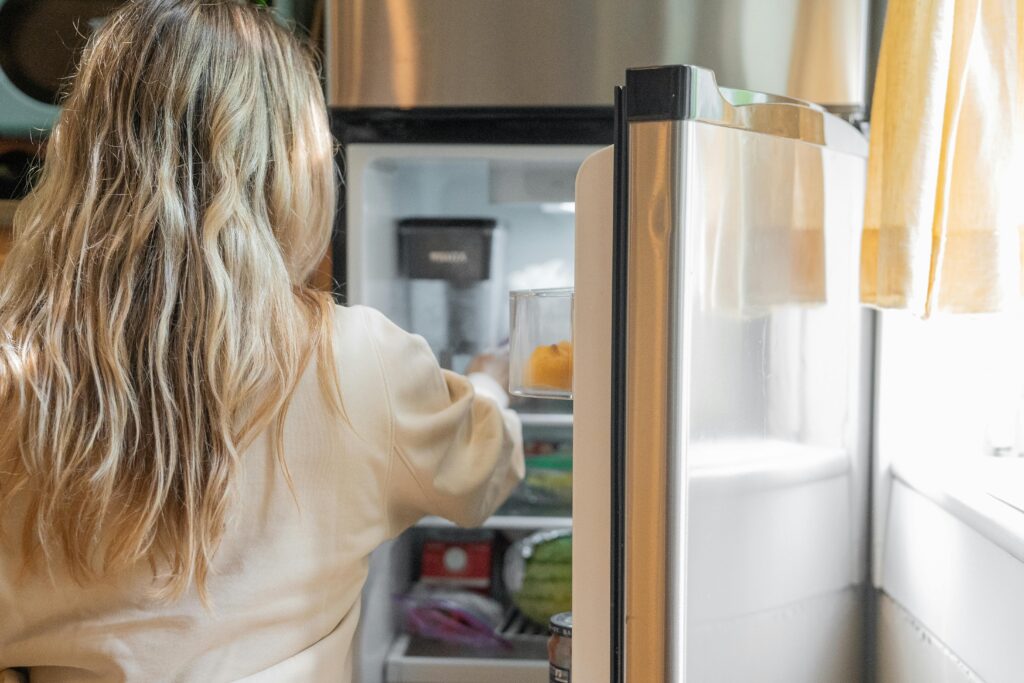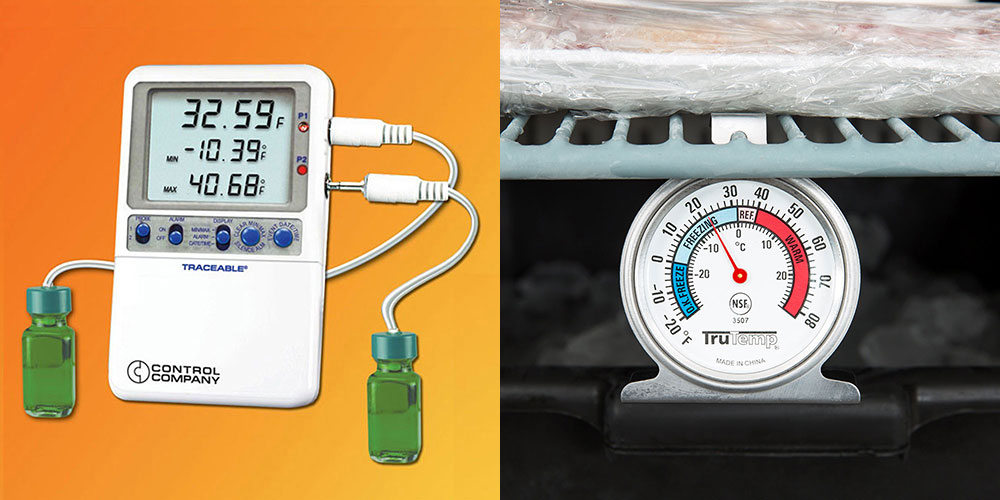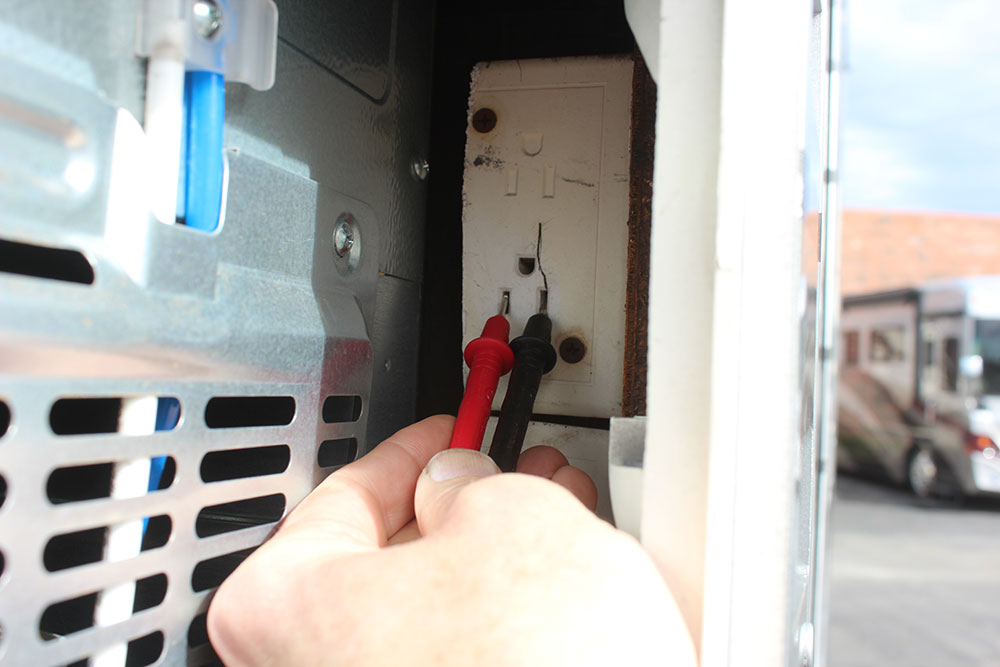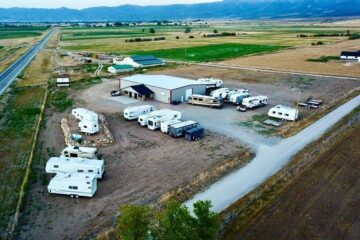
Troubleshooting RV Refrigerator Issues
Tip 1: Check Both Electric and LP Modes
Begin by ensuring your RV is level. Then, determine if the refrigerator is functioning at all or completely non-operational. You can gauge this by using a thermometer or placing your hand on the cooling coils in the main food compartment and freezer.
- On LP gas setting, inspect the back of the refrigerator for the presence of a flame.
- On electric setting, hold your hand near the heating element area at the back (avoid touching to prevent burns).
For accurate temperature measurements, use thermometers designed for refrigerators, preferably in each compartment.

Tip 2: Ensure Proper Airflow
The cooling process usually starts in the freezer and spreads to the main compartment. If the freezer cools but the main compartment doesn’t, it’s likely due to reduced airflow.
- Check if the evaporator fan in the freezer is running. It may cycle on and off, so listen for its operation.
- Examine the diffuser duct, located at the upper rear center of the main compartment, for any ice blockages.
If Cooling is Still Inadequate
If you notice a lack of cooling, take a sniff around the refrigerator. Most RV refrigerators use absorption technology involving ammonia, water, hydrogen gas, and sodium chromate for heat transfer. If you detect an ammonia odor, it signifies a refrigerant leak requiring professional repair or replacement. Reach out to an RV dealer to assess the most cost-effective solution, and check if your unit is still under warranty.
Tip 3: Test All Operating Modes

If your refrigerator functions on LP gas but not on electric, or vice versa, it indicates the cooling unit is intact.
- Verify 120 Volts AC, 12 Volts DC, and an LP gas source for full operational capability.
- Gas is the default heat source, while 120 Volts AC is used when connected to campground power.
- Gas is the default heat source, while 120 Volts AC is used when connected to campground power.
For LP Gas Operation with No 120 Volts AC:
- Inspect circuit breakers and fuses, then test the refrigerator’s outlet for voltage.
- Check for 12 Volts DC at the back of the refrigerator using a test light or multimeter.
- If both voltages are present, look for trouble codes if applicable.
For 120 Volts AC Operation with No LP Gas:
- Ensure the LP gas tank has gas and the valve is open.
- Turn on the gas burner controls. If it lights and goes out quickly, the thermocouple might be faulty.

Pro Tip: Keep a spare thermocouple, as they tend to fail frequently.
If the flame doesn’t light, clean the burner area and port to remove debris that might be blocking it. A well-shaped mostly blue flame is ideal.
Tip 4: The Old Timer’s Trick
If your cooling unit appears charged but still doesn’t function, try an old trick: turn the entire refrigerator upside down for about a week. This can sometimes clear clogs and restore functionality.
In Conclusion
Consider options like rebuilt circuit boards and cooling units with warranties from reputable suppliers. Often, minor issues lead to malfunctions, and by troubleshooting as mentioned, you might avoid costly repairs or provide valuable information to technicians.
Remember, even a little effort can go a long way in keeping your RV refrigerator running smoothly during your travels.


0 Comments